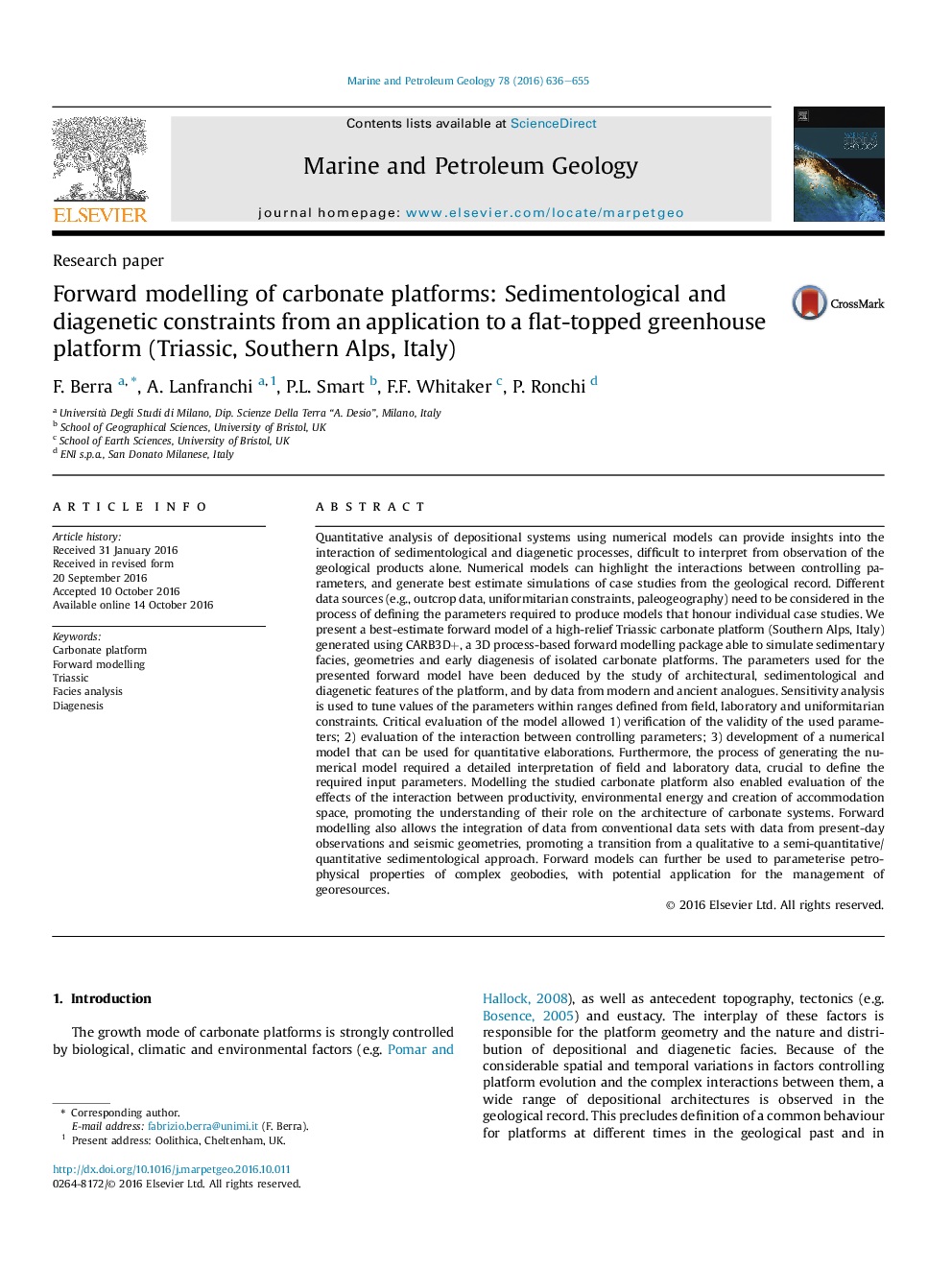| کد مقاله | کد نشریه | سال انتشار | مقاله انگلیسی | نسخه تمام متن |
|---|---|---|---|---|
| 6434421 | 1637149 | 2016 | 20 صفحه PDF | دانلود رایگان |

- We propose a quantitative analysis of a carbonate platform using 3d numerical models.
- Parameter definition is critical to produce realistic 3d numerical models.
- Modelling parameters were defined by architectural and sedimentological studies.
- The obtained model has been tested by comparison with outcrop and laboratory data.
- 3d numerical models may help to parameterise petrophysical properties of geobodies.
Quantitative analysis of depositional systems using numerical models can provide insights into the interaction of sedimentological and diagenetic processes, difficult to interpret from observation of the geological products alone. Numerical models can highlight the interactions between controlling parameters, and generate best estimate simulations of case studies from the geological record. Different data sources (e.g., outcrop data, uniformitarian constraints, paleogeography) need to be considered in the process of defining the parameters required to produce models that honour individual case studies. We present a best-estimate forward model of a high-relief Triassic carbonate platform (Southern Alps, Italy) generated using CARB3D+, a 3D process-based forward modelling package able to simulate sedimentary facies, geometries and early diagenesis of isolated carbonate platforms. The parameters used for the presented forward model have been deduced by the study of architectural, sedimentological and diagenetic features of the platform, and by data from modern and ancient analogues. Sensitivity analysis is used to tune values of the parameters within ranges defined from field, laboratory and uniformitarian constraints. Critical evaluation of the model allowed 1) verification of the validity of the used parameters; 2) evaluation of the interaction between controlling parameters; 3) development of a numerical model that can be used for quantitative elaborations. Furthermore, the process of generating the numerical model required a detailed interpretation of field and laboratory data, crucial to define the required input parameters. Modelling the studied carbonate platform also enabled evaluation of the effects of the interaction between productivity, environmental energy and creation of accommodation space, promoting the understanding of their role on the architecture of carbonate systems. Forward modelling also allows the integration of data from conventional data sets with data from present-day observations and seismic geometries, promoting a transition from a qualitative to a semi-quantitative/quantitative sedimentological approach. Forward models can further be used to parameterise petrophysical properties of complex geobodies, with potential application for the management of georesources.
Journal: Marine and Petroleum Geology - Volume 78, December 2016, Pages 636-655